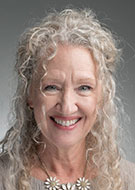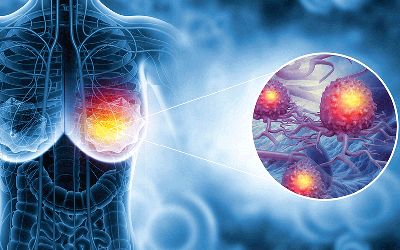AI May Improve Cancer Detection After Mastectomy
Research highlights tradeoff between improved detection and increased false positives


A study published in Radiology offers the first evaluation of standalone AI in a unique and often overlooked population—women undergoing surveillance mammography after unilateral mastectomy.
The research, led by Jung Min Chang, MD, PhD, at Seoul National University Hospital in South Korea, found that AI outperformed radiologists in sensitivity but triggered more false positives, raising important questions about clinical application and patient experience.
“Despite the growing use of AI in breast cancer screening, we noticed a lack of studies evaluating its performance in this specific and clinically important subgroup,” said Dr. Chang, professor of radiology at Seoul National University Hospital. “This gap in evidence motivated us to investigate how standalone AI performs in this real-world scenario.”
Women who undergo unilateral mastectomy are at risk for a second primary cancer in the remaining breast. Surveillance mammography is often used for follow-up, but its effectiveness can be limited, particularly in dense breast tissue.
While AI tools are increasingly used in routine breast cancer screening, none had been validated in this distinct clinical setting.
The researchers retrospectively analyzed 4,184 unilateral surveillance mammograms from 4,184 women. They compared a commercially available standalone AI system with readings from radiologists, using biopsy results and one-year follow-up as the reference standard.
Because most AI systems are trained using bilateral images, the team first validated the system’s ability to function using only unilateral inputs through a simulation study. The results gave them confidence to move forward.

AI Finds More Cancers, Flags More Benign Cases
According to the study, among the 4,184 asymptomatic female patients, 2.7% (111) were found to have contralateral second breast cancer.
Standalone AI detected more cancers than radiologists (73 vs. 61/111). AI also demonstrated higher sensitivity (65.8% vs. 55.0%). However, the AI system lagged radiologists in specificity (91.5% vs. 98.1%), resulting in more false positives.
AI found 16 of the 50 cancers (32%) that radiologists missed. Notably, 34 of 111 (30.6%) cancers were missed by both radiologists and AI.
Dr. Chang said the number of missed cancers was expected due to the prevalence of dense breast tissue among patients in the study, which often limits the sensitivity of mammography. In clinical practice, many of these cancers are identified through supplemental US.
Still, she said certain cases stood out. “In some cases, with subtle findings easily overlooked by radiologists, AI highlighted the lesion and provided a higher level of confidence for detection.”“In some cases, with subtle findings easily overlooked by radiologists, AI highlighted the lesion and provided a higher level of confidence for detection.”
— JUNG MIN CHANG, MD, PHD
Addressing the Challenge of False Positives
The improved sensitivity is encouraging, but the increase in false positives represents a serious concern. False positives can lead to unnecessary imaging, biopsies, patient anxiety and higher health care costs—issues especially relevant in the high-risk postmastectomy population.
In an accompanying commentary, Liane E. Philpotts, MD, professor of radiology and biomedical imaging at Yale School of Medicine in New Haven, CT, emphasized that improved detection alone is not enough, noting, “While it is reassuring that AI software shows increased sensitivity for detection, this comes with the cost of reduced specificity. This has the potential to increase false positives and therefore recalls, biopsies, cost and patient anxiety.”
Dr. Chang acknowledged this tradeoff and said AI’s limitations stem in part from its design. Most systems analyze each image in isolation, without comparing different views or prior studies—something radiologists routinely do to minimize false positives.
The results underscore the importance of validating AI tools in diverse clinical scenarios—not just average-risk screening populations. “It’s encouraging to see that the benefits of AI can potentially extend to patients who have undergone total mastectomy,” Dr. Chang said. “All patients—regardless of their surgical history—should be able to benefit from AI without disparity.”
However, she stressed that AI should not replace radiologists. “Rather than replacing radiologists, I believe AI should serve as a second reader, helping to reduce human error and enhance diagnostic performance.”
Both Dr. Chang and Dr. Philpotts emphasized that future research should focus on how AI performs in real-world settings. “There remains an urgent need to prospectively assess how AI will perform in actual clinical practice, and what its impact will be on patient care and outcomes,” Dr. Philpotts wrote.
Radiologists Central to Thoughtful AI Integration
For radiologists concerned about the potential for increasing caseloads, unnecessary follow-ups and anxiety among patients due to the use of AI, Dr. Chang said careful evaluation is key. “AI should enhance decision-making, not replace it blindly,” she said. “It’s essential for radiologists to thoroughly understand the strengths and limitations of each AI tool in each clinical situation.”
Emphasizing that standalone AI remains a distance off, Dr. Philpotts wrote that using AI in an interactive fashion during radiologist interpretation may be the most practical and effective application. “Far more data are needed before the optimal role of AI in breast imaging practice is determined,” she concluded.
“This is just the beginning,” Dr. Chang said. “We hope our findings will encourage further testing in varied settings to better understand the potential and limits of AI.”
For More Information
Access the Radiology study, “Breast Cancer Detection with Standalone AI versus Radiologist Interpretation of Unilateral Surveillance Mammography after Mastectomy,” and the related commentary, “Evaluating Whether Standalone AI Really Stands Up.”
Read previous RSNA News stories on breast imaging: